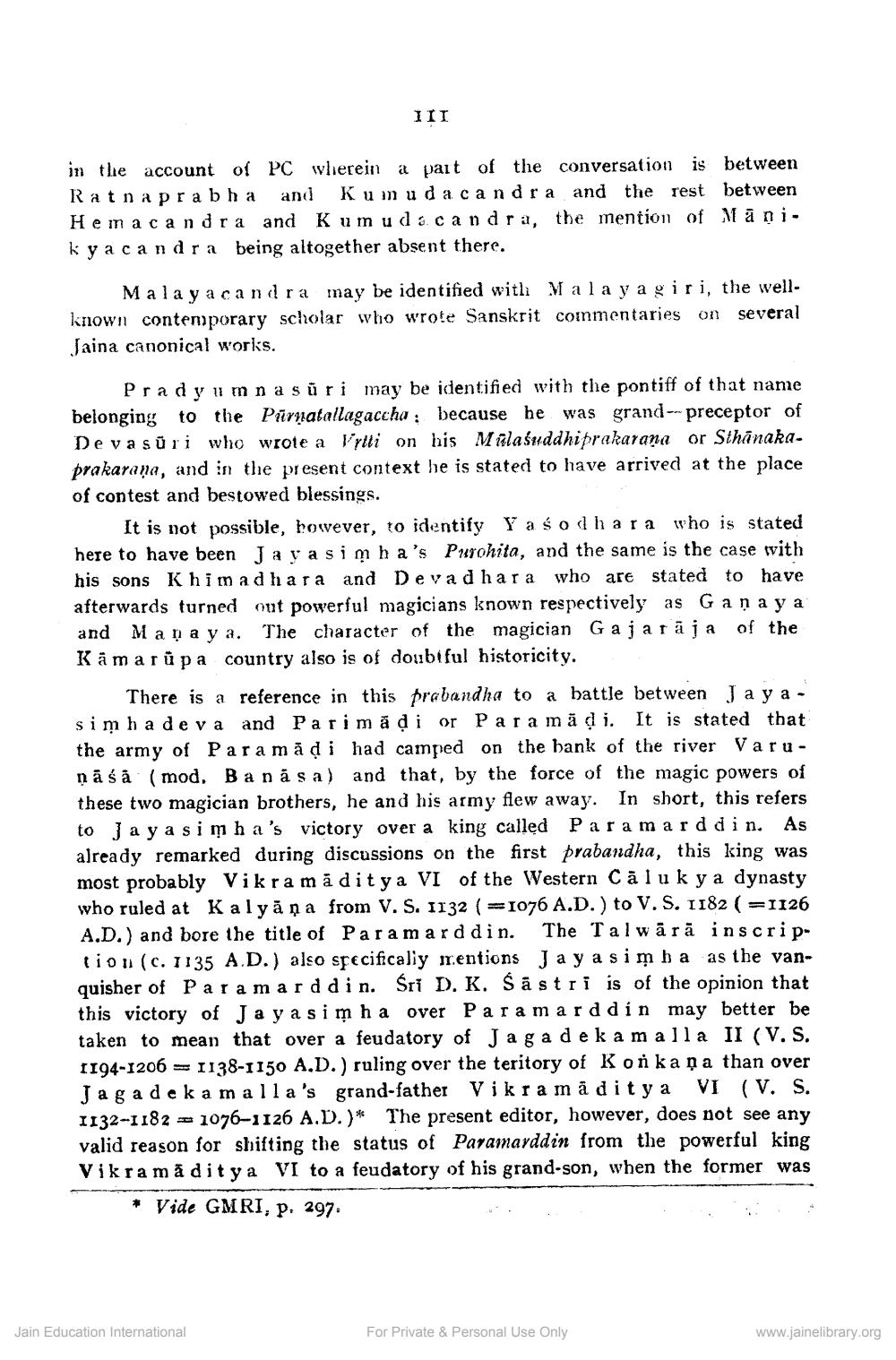________________
III
in the account of PC wherein a part of the conversation is between Ratnapra bha and Kumuda candra and the rest between Hema candra and Kumud : candra, the mention of Maniky a candra being altogether absent there.
Malay a candra may be identified with Mala ya giri, the wellknown contemporary scholar who wrote Sanskrit commentaries on several Jaina canonical works.
Pradyumna sūri may be identified with the pontiff of that name belonging to the Pärnatallagaccha , because he was grand-preceptor of Deva sūri who wrote a Vrtti on his Malaśuddhiprakarana or Sihānakaprakarana, and in the present context he is stated to have arrived at the place of contest and bestowed blessings.
It is not possible, however, to identify Yaś odhara who is stated here to have been Javasimha's Purohita, and the same is the case with his sons Khimadhara and Deva dhara who are stated to have afterwards turned out powerful magicians known respectively as Gana y a and Maņa y a. The character of the magician Gajarāja of the Kamar up a country also is of doubtful historicity.
here is a reference in this prebandha to a battle between Ja ya - simha deva and Parimă di or Para måd i. It is stated that the army of Paramăd i had camped on the bank of the river Varuņā śã (mod. Banása) and that, by the force of the magic powers of these two magician brothers, he and his army flew away. In short, this refers to ja ya simha's victory over a king called Para marddin. As already remarked during discussions on the first prabandha, this king was most probably Vikramaditya VI of the Western Cālu k y a dynasty who ruled at Kalyāņa from V. S. 1132 ( =1076 A.D.) to V. S. 1182 (=1126 A.D.) and bore the title of Paramarddin. The Talwārā inscription (c. 1135 A.D.) also specifically mentions J a ya simba as the vanquisher of Para marddin. Sri D, K. Šāstri is of the opinion that this victory of Jay a simha over Para marddin may better be taken to mean that over a feudatory of Ja ga deka malla II (V. S. 1194-1206 = 1138-1150 A.D.) ruling over the teritory of Konkaņa than over Jag a deka malla's grand-father Vikra māditya VI (V. S. 1132-1182 = 1076–1126 A.D.)* The present editor, however, does not see any valid reason for shifting the status of Paramarddin from the powerful king Vikramaditya VI to a feudatory of his grand-son, when the former was
Vide GMRI, p. 297
Jain Education International
For Private & Personal Use Only
www.jainelibrary.org




